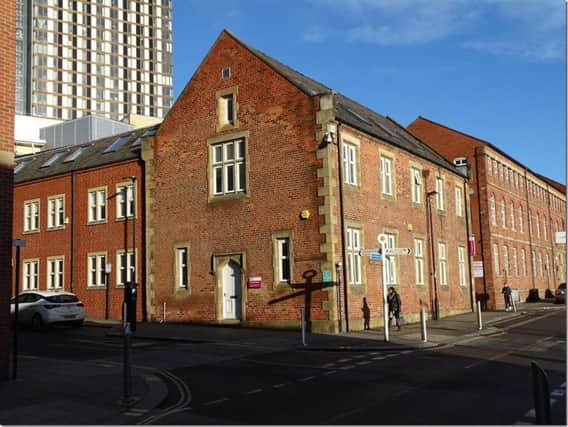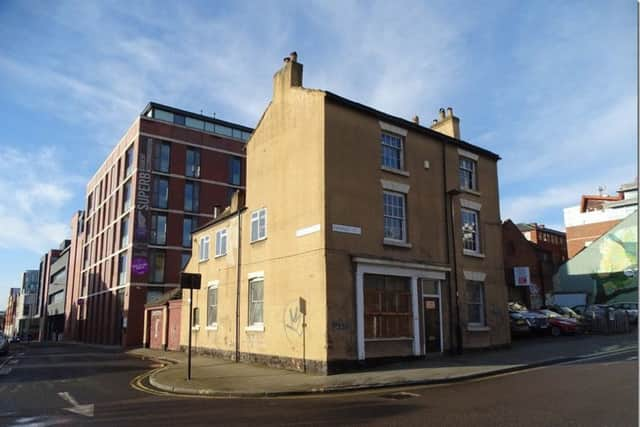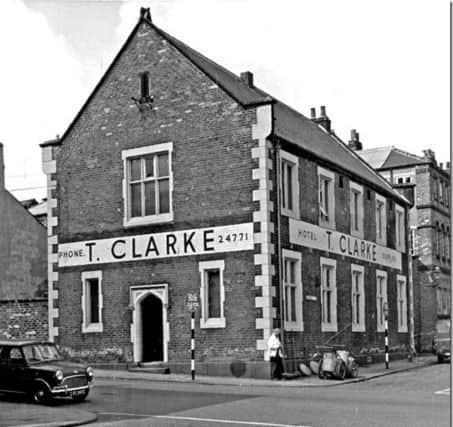City centre schools with pubs right next to them


On researching today’s peek at our past another old pub came into view and, as one or two of you know, I have a passing fancy for the lost pubs of Sheffield, so I’ve incorporated it into today’s article.
The page three clue picture shows the fine work of a Sheffield mason that can be seen on what was a former school for the children of the town.


Advertisement
Hide AdAdvertisement
Hide AdUnfortunately the bell that called the children to school has long gone. It was positioned where the small window is now situated on Charles Street gable end high above street level.
This was St Paul’s National School. Built in 1844, it was a boon for the children of the parish who were in dire need of a basic education, something that was lacking in the slums and courts in the nearby areas.
In 1862, the master was Erasmus Fearnley, who lived at 196 South Street, now sadly demolished, while the female teacher was Miss Mary Brightmore.;
She probably taught the girls needlework and all the other mundane chores that were needed to become a wife, plus the basics to read and write were also taught to them.


Advertisement
Hide AdAdvertisement
Hide AdThe boys were taught to read and write to a better standard to cope with their working life yet to come. It beggars belief that girls were thought to be useless and inferior for the top professions of the day, which they were not.
Near the school, at number 41, George Gamble ran his tailoring shop and at number 61 Richard Deans, a shopkeeper, ran his shop selling whatever goods were needed for the day-to-day living of the townsfolk.
On each side of these businesses were two beer houses, one run by Edward Collier and the other at no 58 was run by James Hall. This beer house is the lost pub but more of that shortly.
Today having two beer houses so close to a school for young children would be frowned on but back then it was just part of everyday life.


Advertisement
Hide AdAdvertisement
Hide AdBy 1869 the small school was judged to be far too small for the needs of the parish, so a large and handsome building was erected at the junction of Cambridge Street and Cross Burgess Street, at a cost of £4,500.
It contained several large school and club rooms.
There were many public day schools, at which about 8,000 children are instructed either gratuitously, or for trifling weekly payments.
The Ragged School, established in 1848 by the Rev J Mauners, was attended by about 100 children.


It was hoped that several other schools would soon be established for the religious and moral training of the destitute poor and the suppression of juvenile depravity and mendacity. For my two church-going converts, Mr D and Mr S, mendacity means lying or uttering lies.
Advertisement
Hide AdAdvertisement
Hide AdThe Lancastrian School, in Gibraltar Street, was attended by about 400 boys and 250 girls. This was established in 1809.
The Wesleyans, in 1832, opened their large Sunday School at Redhill for the reception of day scholars, who paid from 1d to 4d per week.
Later they opened for the same purpose Sunday schools at the Norfolk Street Chapel, Brunswick Chapel and Ebenezer Chapels.
Here were also seven infant schools, supported partly by annual contributions. Four of them were under the care of the Infant School Society, connected with the established church, that was situated in Beet Street, Hermitage Street, Hoyle Street and the Park.
Advertisement
Hide AdAdvertisement
Hide AdThe Catholic School in Surrey Street was built in 1836 and was attended by 50 boys,and 60 girls, who paid from 2d to 3d per week.
St George’s Schools at the head of Beet Street, are among the handsomest and largest National Schools in England. These were erected in 1844-5 at the cost of about £4,000, including £1,200 given for the site.
The building was of stone, in the Norman style, and it had three spacious school rooms that will accommodated 1,280 children, which consisted of 490 boys, 400 girls, plus 300 infants.
The members of St George’s Church contributed liberally towards the building and the Privy Council granted about £1,250, the National School Society £500 and the Church Burgesses £100, so all in all a joint venture by the wealthy societies of the town.
Advertisement
Hide AdAdvertisement
Hide AdThe old pub mentioned earlier can be seen at 158 Charles Street, its name was the Brave Old Oak, a reference to King Charles when he hid from the Parliamentarian army in a large oak tree.
In 1854 an ivory cutter named John Driver applied for a licence for what was then number 64 but his name isn’t mentioned in the keepers of the beer house.
I’ve read on the Sheffield History website that the first licensee was a Mr Thomas Holbrey in 1859 but the only man of that name I can find had a shop and beer house on Holly Street in 1864, this pub sold only beer, no wines or spirits,.
The last listing is for Ernest Fairest in 1939, so it’s safe to assume it ceased to be a beer house shortly after that year.
Advertisement
Hide AdAdvertisement
Hide AdI can remember this shop being an Aladdin’s cave for budding engineers as it became a centre for secondhand engineering tools, drills, shapers, lathes etc.
Today its door sign reads M & G Tools, along with three other businesses. I don’t know when this pub acquired its name but right up to 1911 it was listed just as a beer house and Andrew Seeds held the licence.